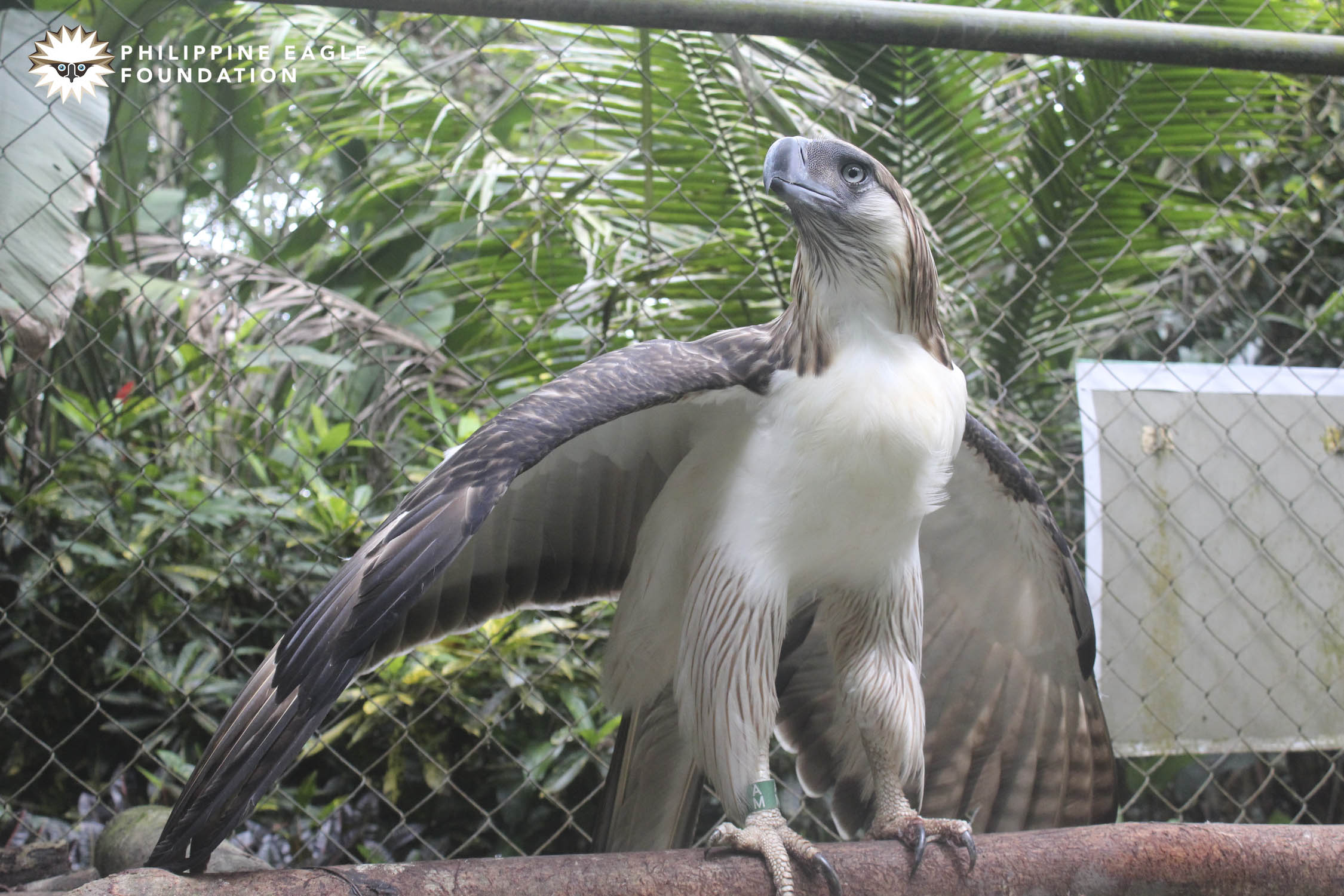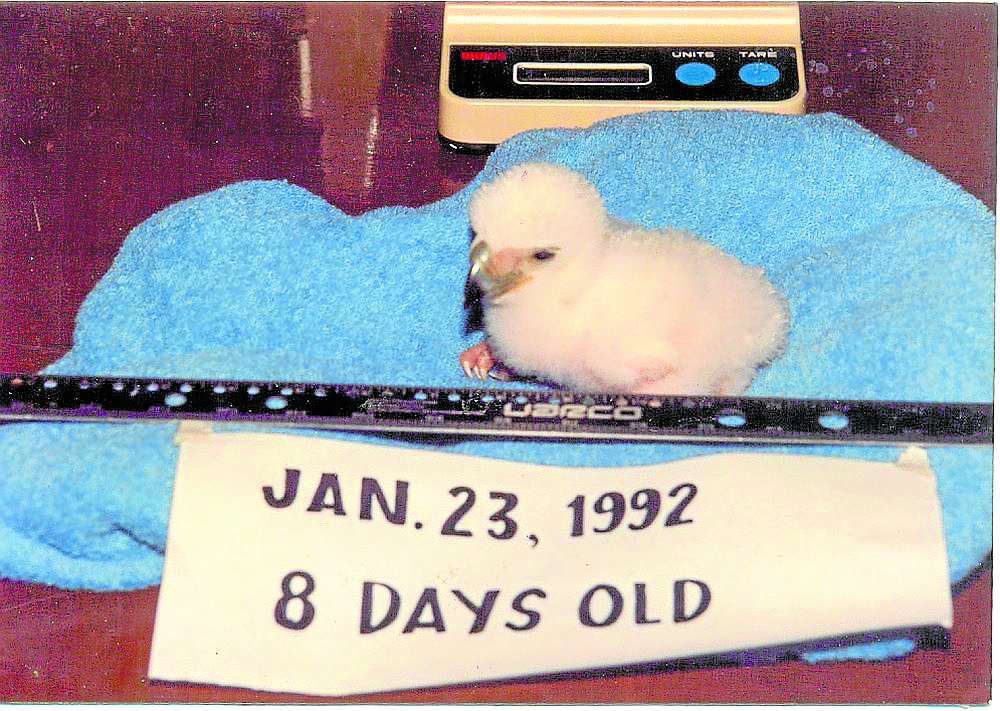Pag-asa, 28: Icon of PH eagle conservation efforts
DAVAO CITY — Pag-asa, the first-ever Philippine eagle bred and hatched in captivity, died on Wednesday night, according to the Philippine Eagle Foundation (PEF).
“It’s sad. We lost a very iconic bird,” Dennis Joseph Salvador, the PEF’s executive director, said in a statement.
Pag-asa succumbed to infections associated with trichomoniasis and aspergillosis, both fatal diseases for raptors. He would have turned 29 on Jan. 15.
The bird underwent treatment for possible trichomoniasis starting Dec. 28, 2020, but its health continued to deteriorate.

FULL LIFE Pag-asa, in the year of his birth, and as a full-grown raptor, in 2017. —PHILIPPINE EAGLE FOUNDATION PHOTOS
‘Magical moment’
Pag-asa was bred and hatched at the Philippine Eagle Center (PEC) in Malagos, a part of the city’s Baguio District, through a technique called “cooperative artificial insemination” in which the semen of male eagles is collected and implanted into female eagles.
The bird’s birth on Jan. 15, 1992, was considered the culmination of the center’s 14 years of research. Nine months later, Pag-asa’s brother, Pagkakaisa, was born.
The two eagles, the offspring of Diola and Junior, caught the world’s attention, giving conservationists hope of boosting the dwindling Philippine eagle population and leading to other successful hatching efforts.
“His birth was a magical moment for all of us who have toiled to make the breeding program work. I named him Pag-asa because he represented hope for the critically endangered Philippine eagle, hope for the many other species and forests we continue to lose even today,” Salvador said.
Philippine eagles lay an egg only once every two years, making their conservation a daunting task.
“The great Philippine eagle is not only our flagship [species] for wildlife conservation but also the best indicator of the forest ecosystem’s health,” Salvador said.
Pag-asa and his mate, Kalinawan, in turn produced a female eagle named Mabuhay also through cooperative artificial insemination. Mabuhay will turn 8 on Feb. 9.
Established in 1987, the PEF is dedicated to increasing the Philippine eagle’s declining population and preserving its habitat through conservation breeding, research and education campaigns promoting their protection.
Jason Ibañez, the PEF’s director for research and conservation, said a pair of Philippine eagles will need from 4,000 to 10,000 hectares of forest cover, depending on habitat quality, in order to survive.
Despite the challenges of breeding eagles, the foundation has produced 28 captive-bred Philippine eagles, of which three have been released to the wild—Kabayan, Hineleban and Chick 23, all male.
But the release of the eagles has not led to the desired outcome of providing them an environment that would allow them to thrive.
‘Human persecution’
Kabayan was the first captive-bred Philippine eagle released—at the Philippine National Oil Co. forest reserve in Kidapawan City, Cotabato, on April 22, 2004. But more than a year later, the bird was electrocuted upon perching on a live wire.
Hineleban, which was released on Oct. 29, 2009, at Mt. Kitanglad in Sumilao, Bukidnon, died due to “human persecution.” Its remains were found on Jan. 16 the next year.
In a 2016 interview, Salvador used the phrase human persecution to refer to activities that threaten the species, such as shooting and hunting, as well as deforestation.
Chick 23 was released on March 9, 2011, also in Mt. Kitanglad, but was brought back to the PEC the same year.
Asked if the center is considering the preservation of Pag-asa’s remains through taxidermy, Salvador said: “Yes, so that he will continue to raise awareness even in death.”
Considered the world’s largest bird of prey, the Philippine eagle was declared an endangered species in 1965 and was later classified “critically endangered” by the International Union for Conservation of Nature.
It was declared the country’s national bird in July 1995.
There are currently only 400 pairs of the species remaining in the wild, according to the foundation. —WITH INQUIRER RESEARCH
